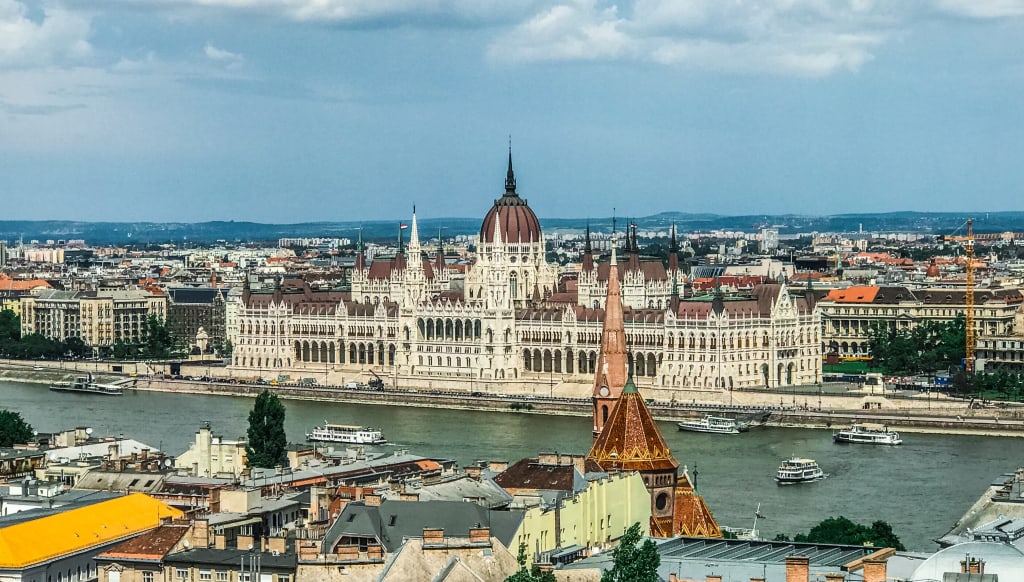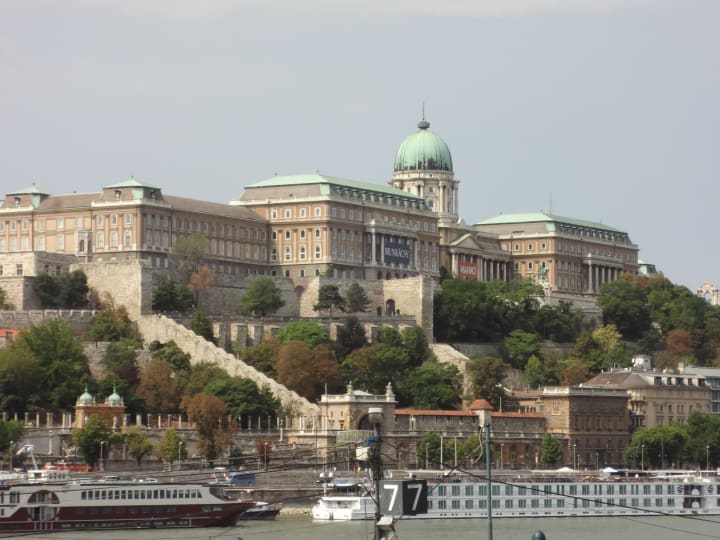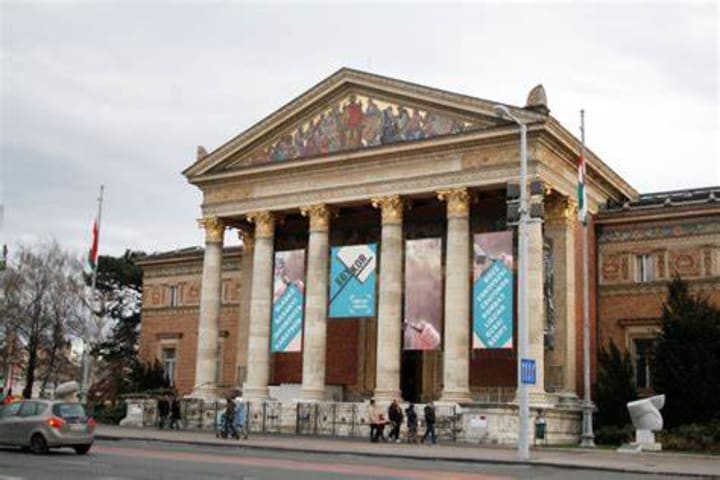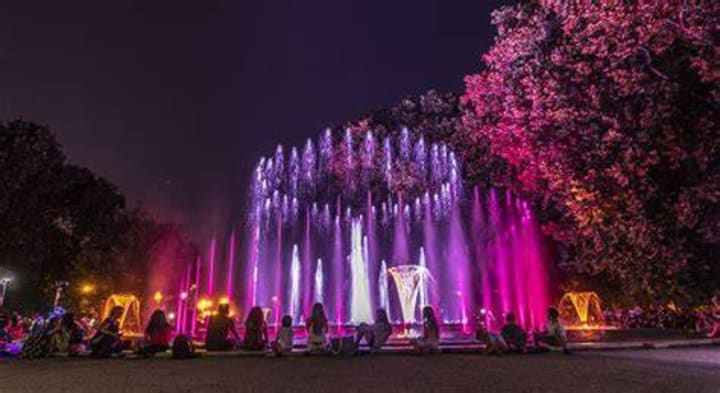Budapest on the Banks of the Danube
The beautiful capital of Hungary

Budapest is the beautiful capital of Hungary. The city lies along the banks of the Danube. Many consider this city the" Paris of the East." It is also home to many UNESCO World Heritage sites.

Castle Hill towers over the Danube and is home to the city's most important medieval monuments and museums.

Buda Castle dates from the 18th century. It is an impressive 200-room castle. Today the castle is home to some museums. The Hungary National Gallery is in the main wing, and the Budapest History Museum is in the south wing and occupies four floors.

The Budapest Parliament is an impressive neo-Gothic building. It is the third largest parliament building in the world. The building was inaugurated in 1886 to mark the 1,000 anniversary of Hungary. At the time, the country was part of the Austro-Hungarian Empire. The parliament has 691 rooms and 19 kilometers of corridors and stairs. Guided tours are available.

St. Stephen's Basilica is a popular attraction dedicated to St. Stephen, the holy king and founder of the Hungarian state. The basilica has a lovely interior and offers panoramic views from its dome. The most precious sacred relic in the basilica is the mummified right hand of the patron saint of the church, the first king of Hungary. It is displayed under glass in the chapel to the left of the high altar. For panoramic 360-degree views over Budapest and the Danube, take one of the two elevators up to the dome. The basilica also offers organ and classical music concerts.

Fisherman's Bastion overlooks the Danube at the point where the fishermen's guild built their defense walls in the Middle Ages. The building has impressive neo-Romanesque towers, courtyards, colonnades, and walls that offer fantastic views over the city and the Danube. In the south courtyard is the bronze equestrian statue of St. Stephen, the first King of Hungary. Reliefs at the sides of the base depict scenes from his life. English language tours are available.

The Danube flows through Budapest from north to south. People enjoy strolling along the Danube Promenade, a century-old riverside walk extending between the Elisabeth and Szechenyi Chain Bridges.

Walking along the Danube, you'll discover the Shoes on the Danube Bank memorial. The memorial consists of 60 pairs of steel sculpted shoes that commemorate the Jews shot here by the Nazis. It is a reminder of the Nazi atrocities suffered by Hungary during WW II.

To view the city skyline, you can take a boat cruise along the Danube. The boats head downriver from the historic Freedom Bridge and then back again.

Mathias Church, known as The Church of Our Lady, is a prominent landmark on Castle Hill, completed in 1269. In the 1300s, they added a relief depicting the Death of Mary in the south doorway. During the Turkish occupation, the church was used as a mosque. Later it was renovated in the Baroque style. On the medieval crypt of the church is the Ecclesiastical Art Museum featuring a collection of sacred relics, stone carvings, and replicas of the Hungarian crown jewels. On Sunday evenings, there are free organ concerts.

Panoramic Gellert Hill is a 235-meter block of dolomite that falls steeply down to the Danube. Several of the city's most famous medicinal springs are along the hill's geological fault line supplying the Gellert Spa and Rudas Baths.

Rudas Baths are some of the buildings that remain from the Turkish occupation. These are among the few original Turkish bathhouses worldwide that are still in use dating back to the 1600s.

The Gellert Monument sits on the northeast slope. It is a tribute to the beloved saint of Hungary, a Benedict monk who died in 1046 and after whom the hill is named. The monument stands high above a man-made waterfall, offering fantastic city views.

Austrians built The Citadel on the summit in 1851, and the Liberation Monument was erected in 1947 in memory of the Soviet soldiers who died fighting in WW II.

Take a walk to Jubilee Park, designed to celebrate the 40th anniversary of the October Revolution. There are many walkways, flowerbeds, and sculptures.

Located across the Freedom Bridge from the Gellert Spa is the Central Market Hall. The market was built in 1987 and is the largest and oldest of the many markets in Budapest. The market has made its home in a major rail terminal and sells fresh produce, foodstuffs, and other goods. You can get snacks from the vendors on the second mezzanine level.

The Museum of Fine Arts has one of the largest collections of artwork by the Old Masters. It was established in 1870 after Hungary inherited fine collections of paintings, drawings, and prints. On display are Italian, Spanish, and Dutch paintings. The museum has six departments – Egyptian art, Ancient art, the Old Sculpture Gallery, the Old Painter Gallery, the Modern Collection, and the Graphics Collection.

The Palace of Art is the city’s leading contemporary art museum. It also hosts temporary exhibits.

Heroes Square is home to the Museum of Fine Arts. Among the other highlights here is the Millennium Monument, a 36-meter column topped by a figure of the Archangel Gabriel. Around the plinth is a group of bronze horsemen representing the conquering Magyar Prince Arpad and six of his warriors. On either side of the column, colonnades extend in a semi-circle. Statues of Hungarian rulers stand between the pillars.
In front of the monument is a memorial to the Unknown Soldier, which is particularly impressive when illuminated at night.

Budapest is known worldwide for its thermal springs. Of the many attractions, the best known is Szechenyi Thermal Bath, established in 1913. Supplied by two thermal springs, there are three outdoor pools, among them an adventure pool and fifteen indoor pools. Guests can also enjoy saunas and steam rooms and spa services like massages.

The Hungarian State Opera opened in 1884 and is the city's top spot for cultural events. It is home to the Budapest Philharmonic Orchestra and the Hungarian National Ballet, and you can get an English-language tour. The interior has excellent artwork and sculptures by the city's most significant artists and a horseshoe-shaped auditorium.

Budapest Zoo & Botanical Garden is one of the world's oldest still-operating zoos. The zoo has more than 1,070 different species of animals. There are well-preserved Art Nouveau animal houses, a nature reserve, themed animal enclosures, and various types of kid-friendly programming. There are regular evening concerts.

University Church is considered to be the most beautiful Baroque church in the city. The church has two towers, and the façade incorporates a triangular tympanum with representations of St. Paul and St. Anthony and the arms of the Pauline Order – a palm between two lions and a raven). The highlights here are the frescoes on the barrel-vaulted ceilings that depict scenes from the life of Mary, the choir stalls, and the sculptures of St. Paul and St. Anthony on the High Altar.

The Hungarian National Museum makes its home in a large classical building with two courtyards. Among the highlights is a monument to the famous Hungarian poet Janos Arany and its park-like gardens with busts of famous people. Among the interesting exhibits are artifacts dealing with Hungary’s struggle for independence and Hungarian and Turkish weapons. You can see Beethoven’s grand piano, which later belonged to Franz Liszt.

City Park has a lovely lake and many attractions like the Museum of Fine Arts, the Palace of Art, the Budapest Zoo & Botanical Garden, the Transport Museum of Budapest, Tivoli Pleasure Park, and the Szechenyi Medicinal Bath.

You can enjoy the lovely Vajadahunyad Castle.

Margaret Island is the main recreation and recuperative center for locals. There are spring-fed medicinal baths, well-tended gardens and paths. The highlight of a visit is the Palatinus Baths, a huge spa complex that includes a bath with artificial waves.

Other things to enjoy on the island are the Rose Garden, the Union Monument, the ruins of the Dominican convent, the 51-meter water tower with an excellent viewing platform, and a large open-air theater. You can rent a bike and go biking and enjoy a meal at one of the restaurants here. At night visitors enjoy the illuminated Margaret Island Musical Fountain.
About the Creator
Rasma Raisters
My passions are writing and creating poetry. I write for several sites online and have four themed blogs on Wordpress. Please follow me on Twitter.






Comments
There are no comments for this story
Be the first to respond and start the conversation.